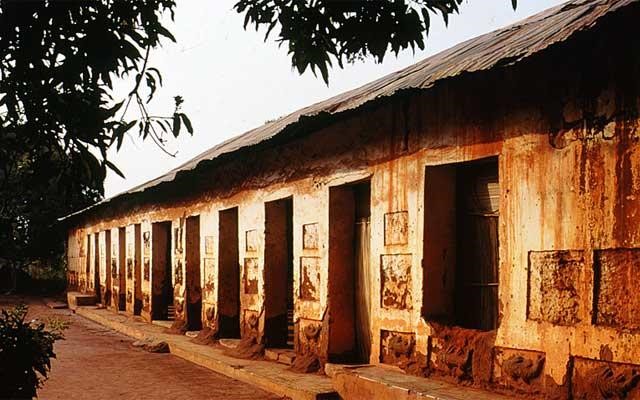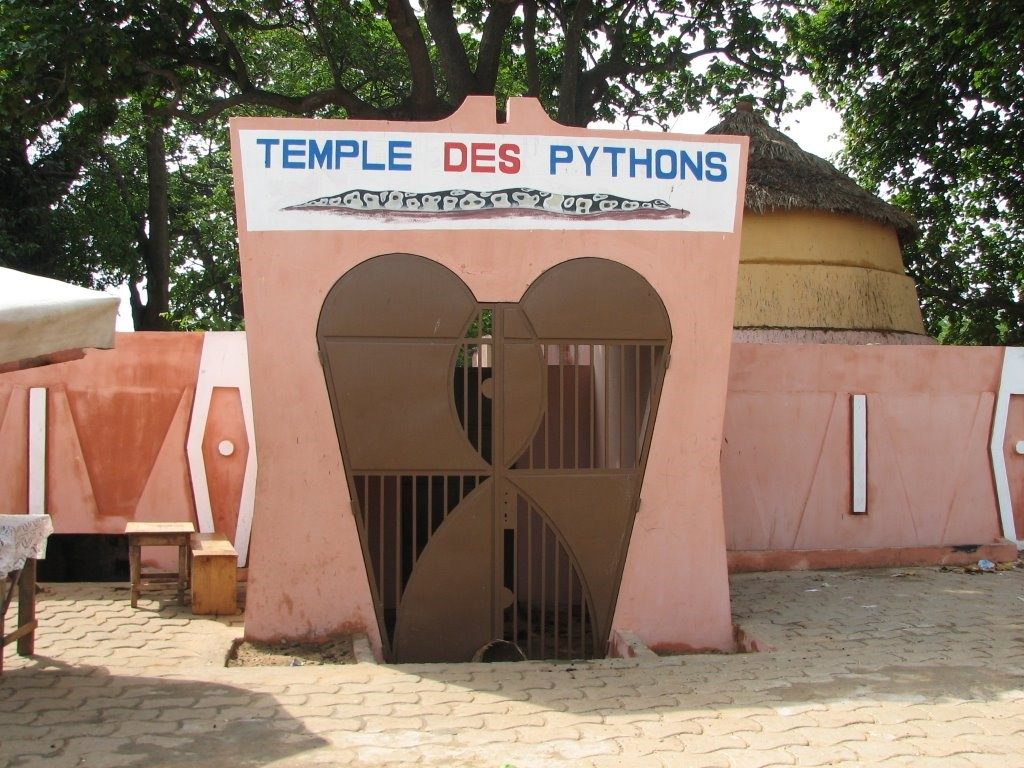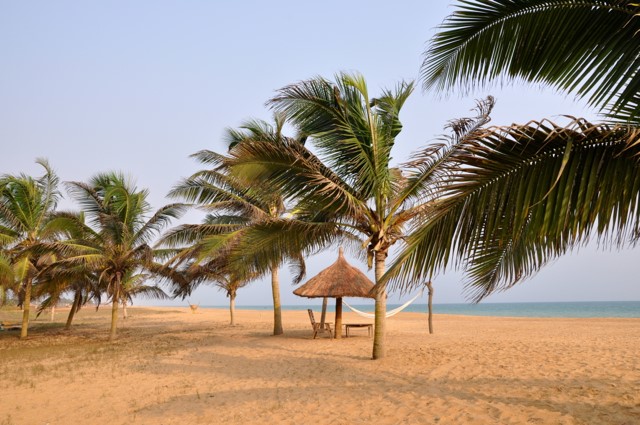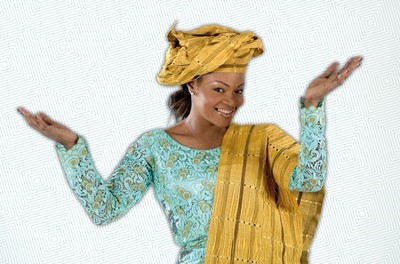Benin
republic-The Land of Culture and Diversity
republic-The Land of Culture and Diversity
Benin
Republic is described as a land of peace, water and cultural diversity. It covers s a surface area of 112,620 km2
from River Niger in the North to the Atlantic Ocean in the South. The
country’s population was put at 9, 877, and 292 in 2013.
Republic is described as a land of peace, water and cultural diversity. It covers s a surface area of 112,620 km2
from River Niger in the North to the Atlantic Ocean in the South. The
country’s population was put at 9, 877, and 292 in 2013.
Benin is a
member of the Economic Community of West African States (ECOWAS), and shares
boarder with Togo in the West, Nigeria in the East, and Niger and Burkina Faso
in the North. The country’s strategic
position means it serves as a trade corridor for other West African countries.
member of the Economic Community of West African States (ECOWAS), and shares
boarder with Togo in the West, Nigeria in the East, and Niger and Burkina Faso
in the North. The country’s strategic
position means it serves as a trade corridor for other West African countries.
Benin
Republic, then called the Republic of Dahomey, gained full independence on 1st August 1960 and changed to its present
name in 1975.
Republic, then called the Republic of Dahomey, gained full independence on 1st August 1960 and changed to its present
name in 1975.
The
political capital of Benin is Porto-Novo, while Cotonou is the economic
capital, and one of the key trade centers in West Africa. Benin has been a
democratic country since 1989 and seen the emergence of 13 democratically
elected presidents including current President Yayi Boni.
political capital of Benin is Porto-Novo, while Cotonou is the economic
capital, and one of the key trade centers in West Africa. Benin has been a
democratic country since 1989 and seen the emergence of 13 democratically
elected presidents including current President Yayi Boni.
Economy
Benin is a
country that essentially lives on its ports and agriculture. The country
provides a strategic gateway to a vast Francophone and Anglophone market of
about 200 million consumers.
country that essentially lives on its ports and agriculture. The country
provides a strategic gateway to a vast Francophone and Anglophone market of
about 200 million consumers.
Its open
port on the Gulf of Guinea provides sea access to the three landlocked West
African countries of Niger, Burkina Faso and Mali.
port on the Gulf of Guinea provides sea access to the three landlocked West
African countries of Niger, Burkina Faso and Mali.
The
country supports revenues from its open port with agricultural activities.
Major agricultural outputs from Benin include; cotton, maize, cassava,
sorghum, oil palm and millet. Its geographical proximity and linguistic
affinity to Nigeria enhances its economic prospects.
country supports revenues from its open port with agricultural activities.
Major agricultural outputs from Benin include; cotton, maize, cassava,
sorghum, oil palm and millet. Its geographical proximity and linguistic
affinity to Nigeria enhances its economic prospects.
Areas of economic growth
Benin has
a large untapped potential in several economic sectors including;
agro-industry, tourism, mining, energy and hydrocarbons.
a large untapped potential in several economic sectors including;
agro-industry, tourism, mining, energy and hydrocarbons.
In the
agricultural sector, the Benin government is promoting Cotton cultivation and
export. In the service sector,
telecommunications is thriving and attracting a lot of investment into the
country with the presence of 4 private national and international operators.
agricultural sector, the Benin government is promoting Cotton cultivation and
export. In the service sector,
telecommunications is thriving and attracting a lot of investment into the
country with the presence of 4 private national and international operators.
The
banking and energy sector s are also emerging as thriving sectors in Benin
Republic with the entry of new financial institutions, creating a more
competitive market, more funding opportunities for businesses and the capacity
to fund bigger infrastructure projects.
banking and energy sector s are also emerging as thriving sectors in Benin
Republic with the entry of new financial institutions, creating a more
competitive market, more funding opportunities for businesses and the capacity
to fund bigger infrastructure projects.
Languages
All the
ethnic groups in Benin Republic have their own language, though French, which
is the official language, is spoken in most cities.
ethnic groups in Benin Republic have their own language, though French, which
is the official language, is spoken in most cities.
Fon, Yoruba and Goun languages are the most
spoken in the South while Adja, Mina, Tori
Bariba, Dendi, Ditamari or Kotokoli are more in the north.
spoken in the South while Adja, Mina, Tori
Bariba, Dendi, Ditamari or Kotokoli are more in the north.
A total of
23 languages are spoken in Benin in addition to French. Some of the languages
share some ethnical similarities with countries like Nigeria, Togo, Burkina
Faso and Niger, which facilitates trade within the corridor and the
hinterland.
23 languages are spoken in Benin in addition to French. Some of the languages
share some ethnical similarities with countries like Nigeria, Togo, Burkina
Faso and Niger, which facilitates trade within the corridor and the
hinterland.
People and Culture
Benin’s
rich cultural diversity is one of its biggest attractions. The country boasts of more than 40 ethnic
groups. However, they all have in
common a high level of tolerance, a strong sense of hospitality, openness and
warmth with which they welcome foreigners into their midst.
rich cultural diversity is one of its biggest attractions. The country boasts of more than 40 ethnic
groups. However, they all have in
common a high level of tolerance, a strong sense of hospitality, openness and
warmth with which they welcome foreigners into their midst.
The sites to visit:
Benin
offers tourists several geographic and cultural attractions including beaches
and picturesque villages in the South, animal parks in the North, and
interesting places like the “high place of slavery” and the “cradle of
voodoo.”
offers tourists several geographic and cultural attractions including beaches
and picturesque villages in the South, animal parks in the North, and
interesting places like the “high place of slavery” and the “cradle of
voodoo.”
-
-
- Dassa-Zoume:
the city of 41 hills
- Dassa-Zoume:
-
Site of the annual pilgrimage to Dassa.
Located about 209 km from
Cotonou, Dassa – Zoume is well known for hosting the “Cave Notre – Dame
d’Arigbo” where “Holy Mary” was reported to
have made an appearance.
Cotonou, Dassa – Zoume is well known for hosting the “Cave Notre – Dame
d’Arigbo” where “Holy Mary” was reported to
have made an appearance.
The city, with its 41 hills,
has a rich history captured in sacred sites and palaces. The “Cave Notre – Dame Arigbo”
attracts each year in mid – August, tens of thousands of pilgrims from all
corners of Benin and neighboring countries. The hills also offer endless
possibilities for excursions, walks, cycling and even climbing.
has a rich history captured in sacred sites and palaces. The “Cave Notre – Dame Arigbo”
attracts each year in mid – August, tens of thousands of pilgrims from all
corners of Benin and neighboring countries. The hills also offer endless
possibilities for excursions, walks, cycling and even climbing.
-
-
- Royal
palace of Abomey
- Royal
-
The historic capital of the kingdom of Danhomey is located
135 km from Cotonou, Abomey. It was built in the 16th century by King Houegbadja. The site has the statue of king
Behanzin, who fought to protect the Benin Kingdom, especially against the
French.
135 km from Cotonou, Abomey. It was built in the 16th century by King Houegbadja. The site has the statue of king
Behanzin, who fought to protect the Benin Kingdom, especially against the
French.
The historic museum of Abomey was created in 1943, by the
French colonial administration. It occupies the site of the palace wing where
the palaces of kings Guézo and Glèlè are. The whole palace site occupies 44
hectares and has been listed as World Heritage Site by UNESCO since 1985. The
palaces of Abomey provide an exceptional testimony on an ancient kingdom that
disappeared, while the city is still a major center of traditional religion in
Benin.
French colonial administration. It occupies the site of the palace wing where
the palaces of kings Guézo and Glèlè are. The whole palace site occupies 44
hectares and has been listed as World Heritage Site by UNESCO since 1985. The
palaces of Abomey provide an exceptional testimony on an ancient kingdom that
disappeared, while the city is still a major center of traditional religion in
Benin.
-
-
- The
waterfalls Tanongou
- The
-
About 81 km from Natitingou, Tanongou village is one of the
gateways to the Pendjari Park with a beautiful waterfall of rare beauty. This
is about the most famous waterfall in Benin. The waters fall from a height of
about 20 meters, which is collected at the bottom in a basin forming a natural
swimming pool, with of about 30 meters. This waterfall also serves as one of
the largest places of worship for traditional religionists.
gateways to the Pendjari Park with a beautiful waterfall of rare beauty. This
is about the most famous waterfall in Benin. The waters fall from a height of
about 20 meters, which is collected at the bottom in a basin forming a natural
swimming pool, with of about 30 meters. This waterfall also serves as one of
the largest places of worship for traditional religionists.

-
-
- La
Porte du non retour (Door of no return)
- La
-
The “Door of no Return” is a monument that has been
raised in memory of millions of Africans who paid with their freedom, and even their life, the building of European
economic powers and the fortunes of the bourgeoisie of Bordeaux, Nantes and
other top French and European cities.
Built on the verge of Ouidah’s beach, it represents the point of
shipment of slaves.
raised in memory of millions of Africans who paid with their freedom, and even their life, the building of European
economic powers and the fortunes of the bourgeoisie of Bordeaux, Nantes and
other top French and European cities.
Built on the verge of Ouidah’s beach, it represents the point of
shipment of slaves.
-
-
- Tata Somba
-
Tata-Somba are strong castles with thatched
roofs and are part of the architectural heritage of Benin. These fortified
houses, made of earth rich natural cement, covered with clay and cow dung, and
other natural materials have a floor designed to protect humans and domestic
animals against wild animals and men.
The Somba people live mainly in Atacora (North of the country)
and are known for their unique homes -the Tata Somba. They live very
traditional life styles not found anywhere else in Benin.
roofs and are part of the architectural heritage of Benin. These fortified
houses, made of earth rich natural cement, covered with clay and cow dung, and
other natural materials have a floor designed to protect humans and domestic
animals against wild animals and men.
The Somba people live mainly in Atacora (North of the country)
and are known for their unique homes -the Tata Somba. They live very
traditional life styles not found anywhere else in Benin.
-
-
- The
lacustrine village of Ganvié
- The
-
Benin is the only country in Africa with a lacustrine
village, where the houses are constructed on pillars of about ten meters from
the surface of the lagoon. Ganvié has a population of 15,000 inhabitants that
is well-organized with all aspects of life taking place on water.
village, where the houses are constructed on pillars of about ten meters from
the surface of the lagoon. Ganvié has a population of 15,000 inhabitants that
is well-organized with all aspects of life taking place on water.
The lacustrine village of Ganvié presents a lot of
interesting sites such as restaurants, bars, bungalows, coffee bars and even
hotels all entirely on water. It is usual in Ganvie to see canoes filled with
various foods cross the village selling to the inhabitants.
interesting sites such as restaurants, bars, bungalows, coffee bars and even
hotels all entirely on water. It is usual in Ganvie to see canoes filled with
various foods cross the village selling to the inhabitants.
-
-
- Palace
of Honmè
- Palace
-
Porto-Novo, the administrative and cultural capital of
Benin, is home to the Honmè museum, called by many “Porto-Noviens” as
Palais-Royal. It used to be the residence of King Toffa, the first king to
have signed a friendship treaty with France.
Benin, is home to the Honmè museum, called by many “Porto-Noviens” as
Palais-Royal. It used to be the residence of King Toffa, the first king to
have signed a friendship treaty with France.
The kingdom of Benin was one of the most enduring in West
Africa. It ended in 1976, following a disagreement over succession. The museum
displays life in the royal court during the 19th and early 20th century. The
collections are full of photos showing King Toffa, in his regal bearing. It
offers visitors an insight on how African royalty lived barely half a century
ago!
Africa. It ended in 1976, following a disagreement over succession. The museum
displays life in the royal court during the 19th and early 20th century. The
collections are full of photos showing King Toffa, in his regal bearing. It
offers visitors an insight on how African royalty lived barely half a century
ago!
-
-
- The
temple of the Ouidah pythons
- The
-
In 1717, after a fratricidal war between the kingdom of
DANXOME and that of HOUEDA, the defeated king of Ouidah fled into the forest
to escape the warriors who pursued him. In the forest, he was said to have
been protected by pythons that attacked the mercenaries of Danxome kingdom.
DANXOME and that of HOUEDA, the defeated king of Ouidah fled into the forest
to escape the warriors who pursued him. In the forest, he was said to have
been protected by pythons that attacked the mercenaries of Danxome kingdom.
In honor of the
pythons, he built the temple of Ouidah in the forest. The temple is inhabited
by pythons of all sizes, winding loose on the aisles. Every seven years, there
is a celebration at the temple, involving 41 young virgin girls, in a big
ceremony of purification. The goal is to exorcise evil spirit and to bring
peace and prosperity to the village.
pythons, he built the temple of Ouidah in the forest. The temple is inhabited
by pythons of all sizes, winding loose on the aisles. Every seven years, there
is a celebration at the temple, involving 41 young virgin girls, in a big
ceremony of purification. The goal is to exorcise evil spirit and to bring
peace and prosperity to the village.
-
-
- National
Park of Pendjari
- National
-
The Pendjari Park is part of the largest protected reserve
in West Africa. The park covers 480 000 hectares. Chosen as a biosphere reserve since 1986,
the park hosts an extremely rich ecosystem. Visitors can get very close to
some of the 217 species recorded in the park including; elephants, baboons,
lions, and hippos.
in West Africa. The park covers 480 000 hectares. Chosen as a biosphere reserve since 1986,
the park hosts an extremely rich ecosystem. Visitors can get very close to
some of the 217 species recorded in the park including; elephants, baboons,
lions, and hippos.
Relaxation at the beach side
-
-
- The
beach of Grand Popo
- The
-
Grand Popo is one of the most beautiful beaches of Benin. Located in the department of Mono, it is about in two
hours travel by taxi from Cotonou. The city is not far from the Togo border.
The beach is the main attraction here, but there are some other things to see
and do. You can go to Hève, one of the main villages of Grand Popo. It
is a fishing village that you can walk through. There are also a few other
businesses.
hours travel by taxi from Cotonou. The city is not far from the Togo border.
The beach is the main attraction here, but there are some other things to see
and do. You can go to Hève, one of the main villages of Grand Popo. It
is a fishing village that you can walk through. There are also a few other
businesses.
-
-
- Fidjrossè Beach
-
Fidjrossè Beach is one of the best beaches to visit on
Sunday within the Cotonou metropolis.
Beninese and other tourists usually meet on this beach on Sundays to
have fun. There are also lots of restaurants and bars which display and sell
Benin cuisine.
Sunday within the Cotonou metropolis.
Beninese and other tourists usually meet on this beach on Sundays to
have fun. There are also lots of restaurants and bars which display and sell
Benin cuisine.
Markets in the Economical Capital City
-
-
- Dantokpa Market
-
The name ”Dantokpa” means
“on the banks of the lagoon,” ”Dan” (serpent) is the name of the deity the
market is named after. Located in the heart of the city, it is found at the
entrance of the new bridge at Martin Luther King or close to the West and East
side of the city. Dantokpa market has been around for several centuries and
occupies several acres of land, and is described as the “largest market
in West Africa.”
“on the banks of the lagoon,” ”Dan” (serpent) is the name of the deity the
market is named after. Located in the heart of the city, it is found at the
entrance of the new bridge at Martin Luther King or close to the West and East
side of the city. Dantokpa market has been around for several centuries and
occupies several acres of land, and is described as the “largest market
in West Africa.”
-
-
- Missèbo Market
-
This is the major market for used clothes in Benin. Located
in the heart of Cotonou near Steinmetz, it is dominated (at least 90%) of
Nigerian Ibo traders. This market is an example of integration of foreign
communities in Benin. Known as number 1 in selling used clothing in Benin, the
Missèbo market beyond this feature, offers additional features like mending
“insitu” outfits.
in the heart of Cotonou near Steinmetz, it is dominated (at least 90%) of
Nigerian Ibo traders. This market is an example of integration of foreign
communities in Benin. Known as number 1 in selling used clothing in Benin, the
Missèbo market beyond this feature, offers additional features like mending
“insitu” outfits.
Zeynab
Zeynab
is one of the most famous international Beninese singers. Her real name is
Zeynab HABIB Oloukèmi. She grew up in Côte d’Ivoire where she was born. Her
grandmother was a renowned singer in her village. Her uncle is also a musician
playing the traditional music “Bolojo” while her elder brother is a DJ in a
popular nightclub in Paris.
is one of the most famous international Beninese singers. Her real name is
Zeynab HABIB Oloukèmi. She grew up in Côte d’Ivoire where she was born. Her
grandmother was a renowned singer in her village. Her uncle is also a musician
playing the traditional music “Bolojo” while her elder brother is a DJ in a
popular nightclub in Paris.
She
returned to Benin in 1993, to continue her education but soon went into music
in 1995 joining the Super Quartz group, which later made her their lead
singer.
returned to Benin in 1993, to continue her education but soon went into music
in 1995 joining the Super Quartz group, which later made her their lead
singer.
Through
this group, she had the opportunity to work as a vocalist with many top
artists in Africa. She also veered briefly into the movies taking part in film
directed by Chinese in Benin and also in a TV commercial. In summer 2001, she
travelled to France to learn more about music.
this group, she had the opportunity to work as a vocalist with many top
artists in Africa. She also veered briefly into the movies taking part in film
directed by Chinese in Benin and also in a TV commercial. In summer 2001, she
travelled to France to learn more about music.
Her
first album INTORI, sung in different
rhythms and languages of Benin Republic, sold 6,000 copies, and had 14
tracks. Released in February 2002, at VIP Club, it marked her entry into
the world of professional music.
first album INTORI, sung in different
rhythms and languages of Benin Republic, sold 6,000 copies, and had 14
tracks. Released in February 2002, at VIP Club, it marked her entry into
the world of professional music.
Since
then, she has gone to release two additional albums; ” D’un endroit à un
autre” released in 2004 also includes 14 tracks and the current 3rd album
called ‘Olukemi’ released last September 16th 2013, is an album of 16
tracks.
then, she has gone to release two additional albums; ” D’un endroit à un
autre” released in 2004 also includes 14 tracks and the current 3rd album
called ‘Olukemi’ released last September 16th 2013, is an album of 16
tracks.
On
these albums, the artist sings in Yoruba, French and English, which gives the
albums a universal character with the several cultures highlighted. She won
the Kora Award in 2005 in the category of best female Artist from West Africa.
these albums, the artist sings in Yoruba, French and English, which gives the
albums a universal character with the several cultures highlighted. She won
the Kora Award in 2005 in the category of best female Artist from West Africa.
Zynab
has also been a National Goodwill Ambassador for UNICEF since 2007 working for
the defense and the rights of children.
has also been a National Goodwill Ambassador for UNICEF since 2007 working for
the defense and the rights of children.
|
Circle
distance from Cotonou to some major world capitals and Benin |
||||
|
Lagos
|
100
|
Dassa-Zoumé
|
203
|
|
|
Lomé
|
150
|
Londres
|
5020
|
|
|
Parakou
|
418
|
Stockholm
|
6069
|
|
|
Porga
|
645
|
New-York
|
8381
|
|
|
Malanville
|
742
|
Rome
|
4057
|
|
|
Porto-novo
|
30
|
Genève
|
4443
|
|
|
Lokossa
|
106
|
Paris
|
4713
|
|
|
Djogou
|
416
|
Francfort
|
4888
|

































